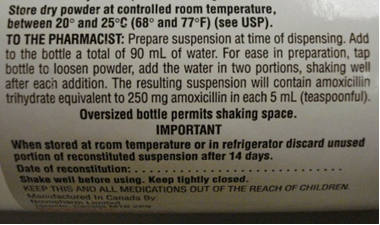What is reconstitution
It is Saturday afternoon and you are studying for finals when you get a sudden craving for brownies. On the back of the box you read the given directions, or recipe, on how to turn the brownie powder inside the box into yummy liquid brownie batter:
- Add 1/3 cup vegetable oil
- Add 1/2 cup water
- Add one egg
- Mix well
By following the given directions on the back of the box, you have in actuality completed the process of reconstitution. You have dissolved the brownie powder by using three diluents (oil, water, and an egg) to make a liquid brownie batter.
Like the brownie powder, medications are also available in a dry form - powders and crystals. The dry medication is available in three common containers: a glass vial, a glass ampule, and a plastic bottle. The container is to medications what the box is to the brownie mix. The container containing the powdered medications will have directions, or recipe, on the label on how to properly reconstitute the medication. Before reconstituting a medication, it is important to thoroughly read the medication label on the container.

Directions for Reconstitution
Medications are packaged in a dry form so that they can be stored for a longer period of time. The dry form of medication may come from the pharmacy or may be kept in a medication system on the nursing unit. A pharmacist or other health professional will need to reconstitute the medication so that it can be administered to the patient.
After a medication has been reconstituted, it can be stored only for a short time before it can no longer be used. The length of time a liquid medication, or any medication, can be stored safely is known as the shelf life of a medication. The medication label will have an expiration date on it and will indicate how long the shelf life is after it has been reconstituted. Additionally, the medication label will indicate the concentration after reconstitution. For example, 250 mg/5 mL or 10,000 U/mL.
